The evidence continues to accumulate affirming there is nothing unusual about modern temperature changes – including recent net cooling – throughout large regions of the globe.
Cruz et al., 2021 (Argentina)
Argentina’s (Tixi Cave) present annual temperature is 13.8°C. It was 3.5°C (17.3°C), 1.7°C (15.5°C), 3°C (16.8°C), and 4.5°C (18.3°C) warmer than today 3496, 1656, 656, and 160 years before present, respectively. So ~1860 was 4.5°C warmer.
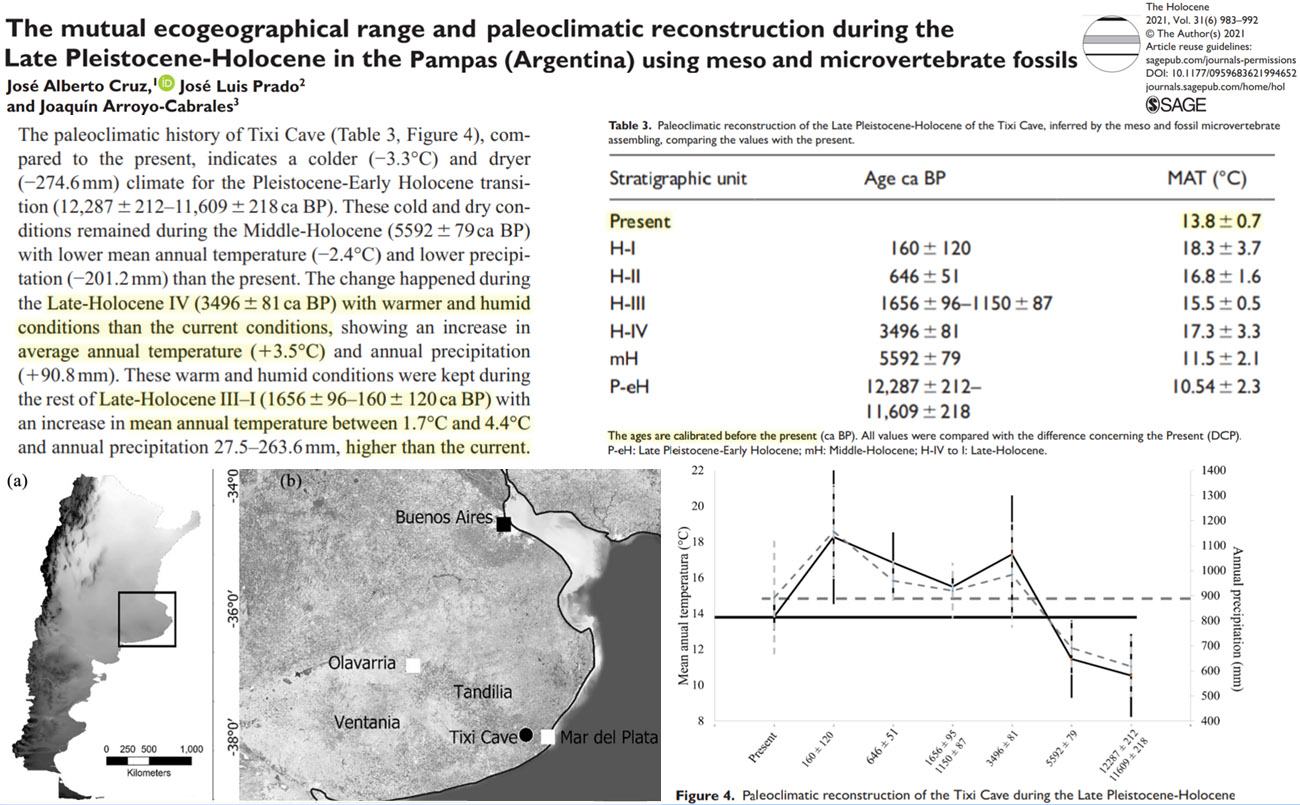
Pumijumnong et al., 2021 (Thailand)
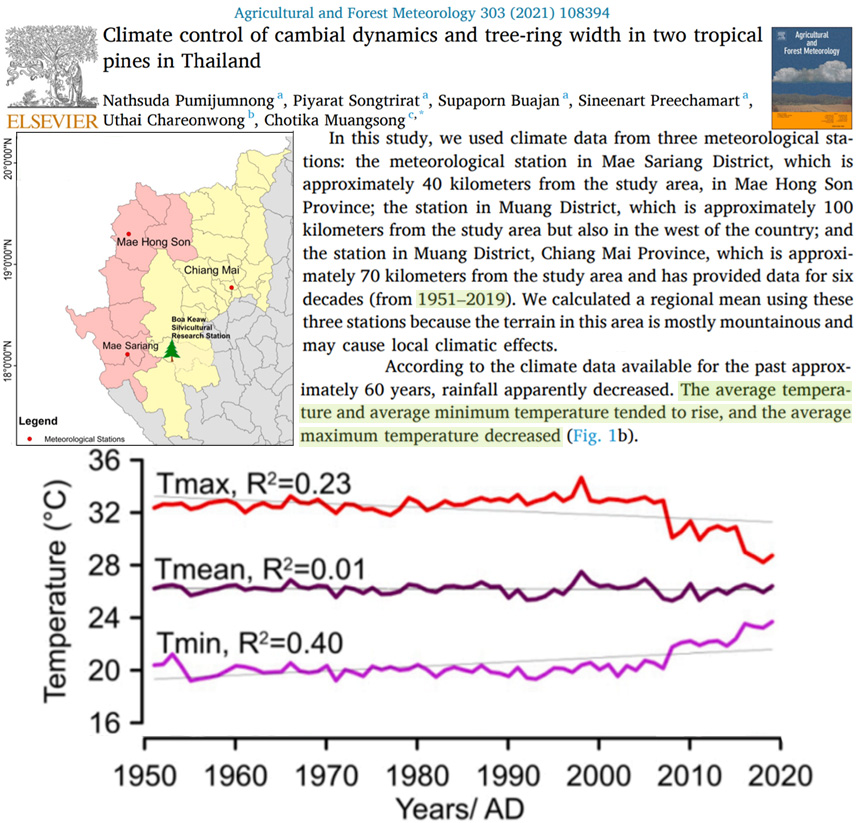
This same lead author published a study in 2020 that showed central Thailand was warmer in the 1840s than in the 1990s.
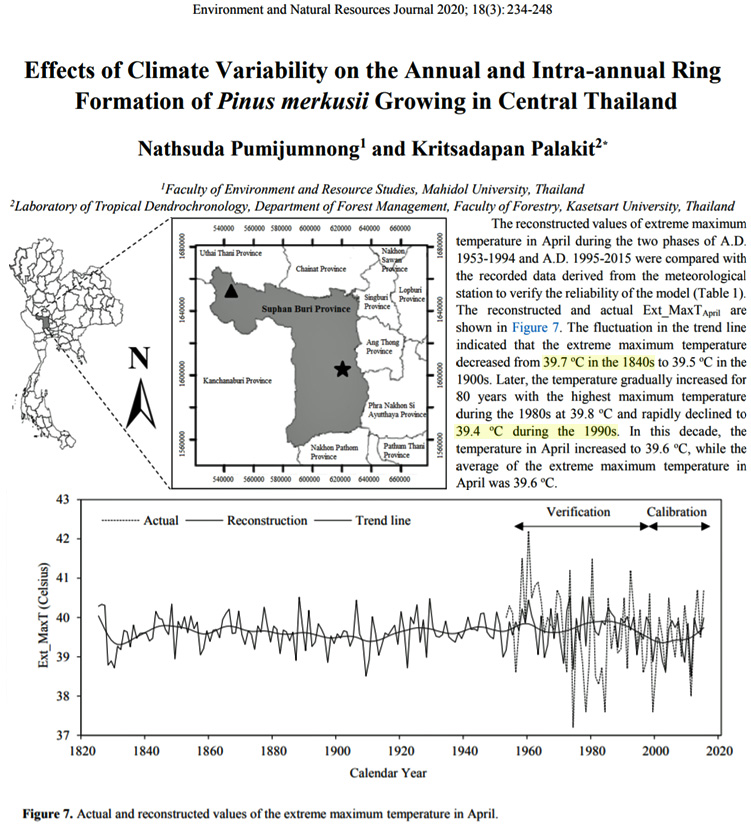
Richter et al., 2021 (North Icelandic Shelf)

Andreev et al., 2021 (Far East Russia)
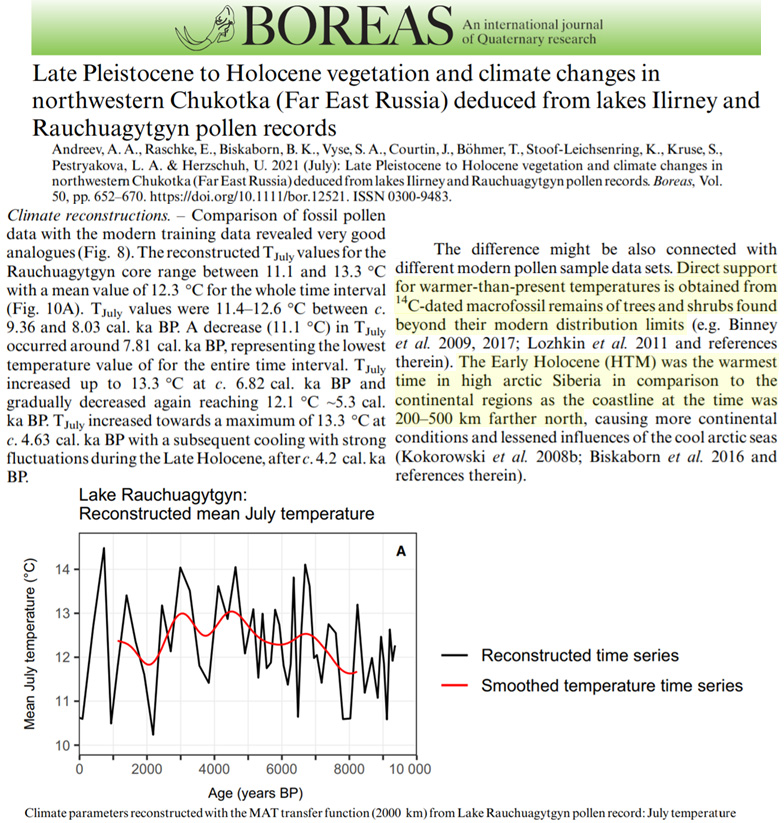
Zhang et al., 2021 (southeastern China)
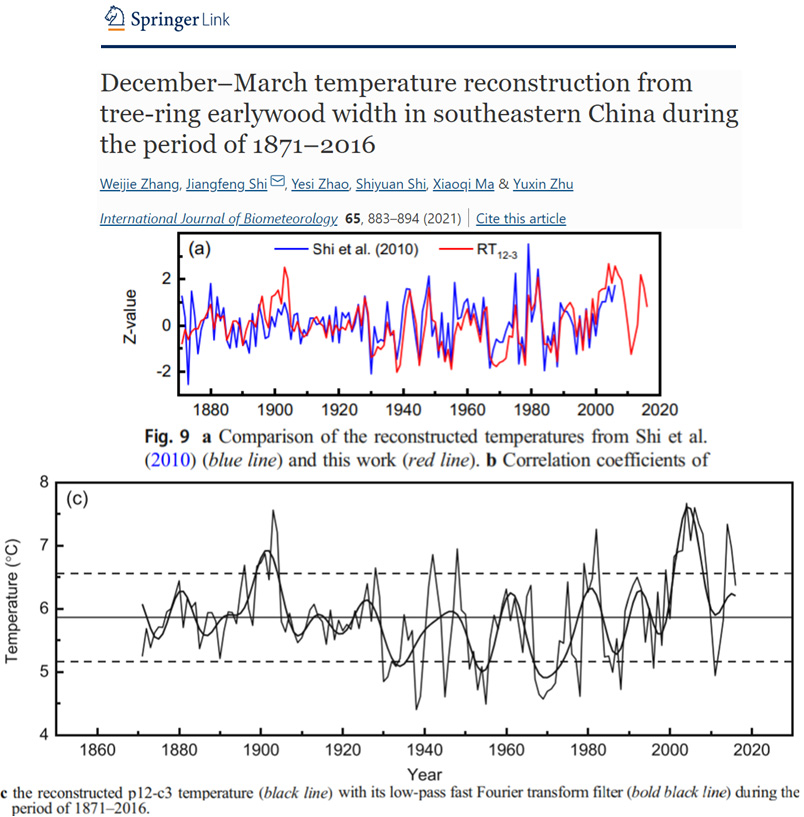
Krawczyk et al, 2021 (Baffin Bay, west and southwest Greenland)
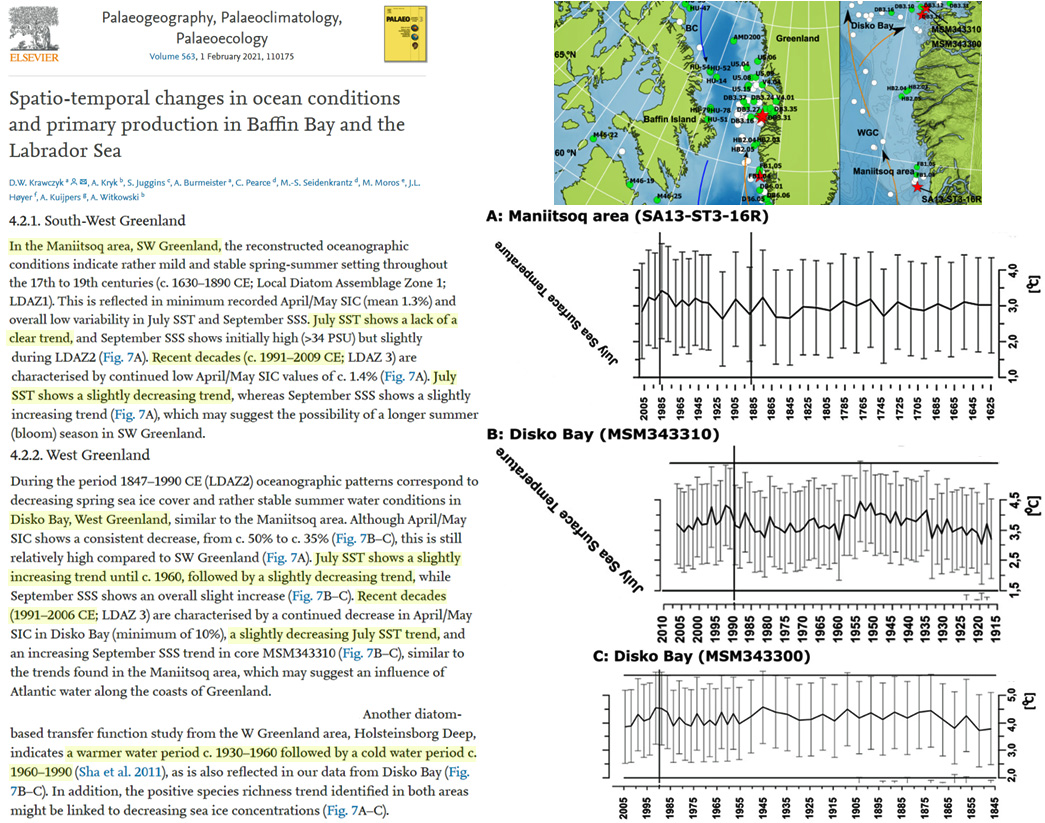
Li et al., 2021 (South China Sea)
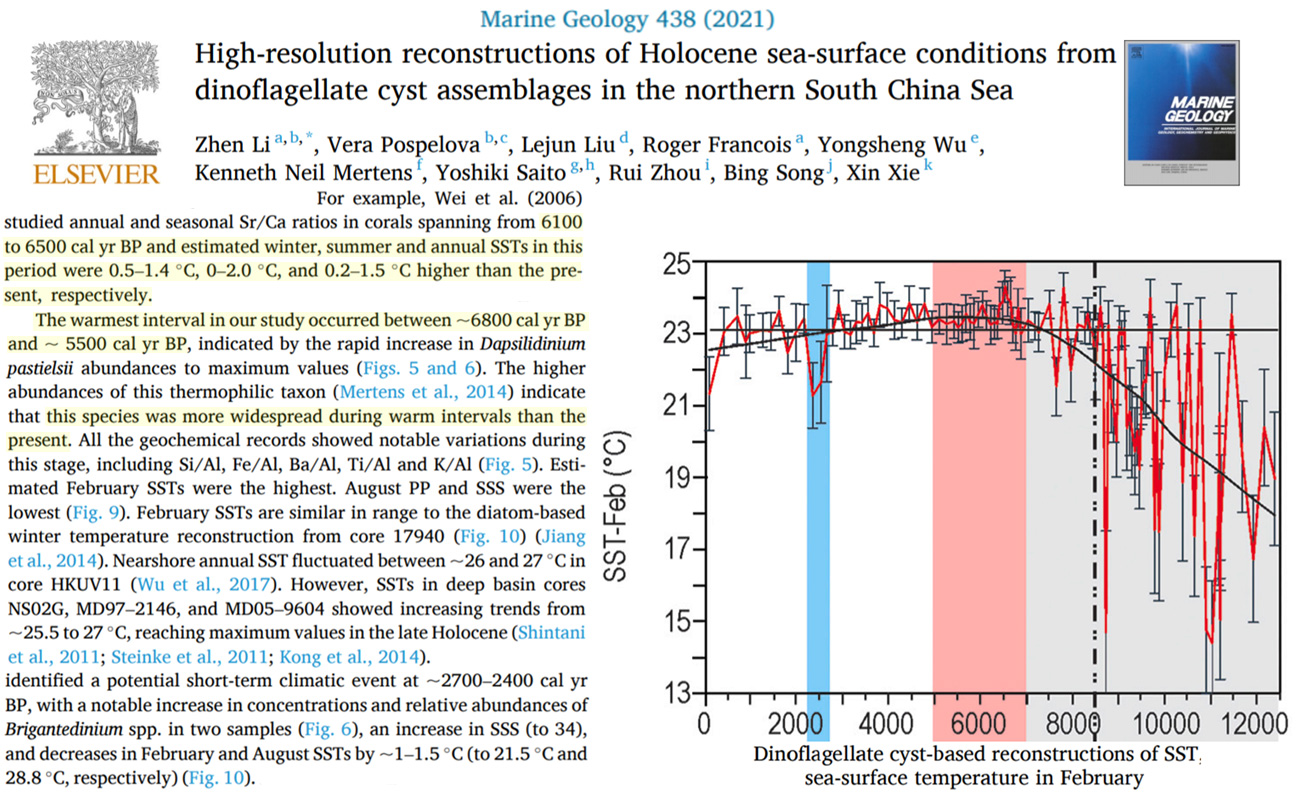
Ackerman and Goldblum, 2021 (Canadian Rocky Mountains)
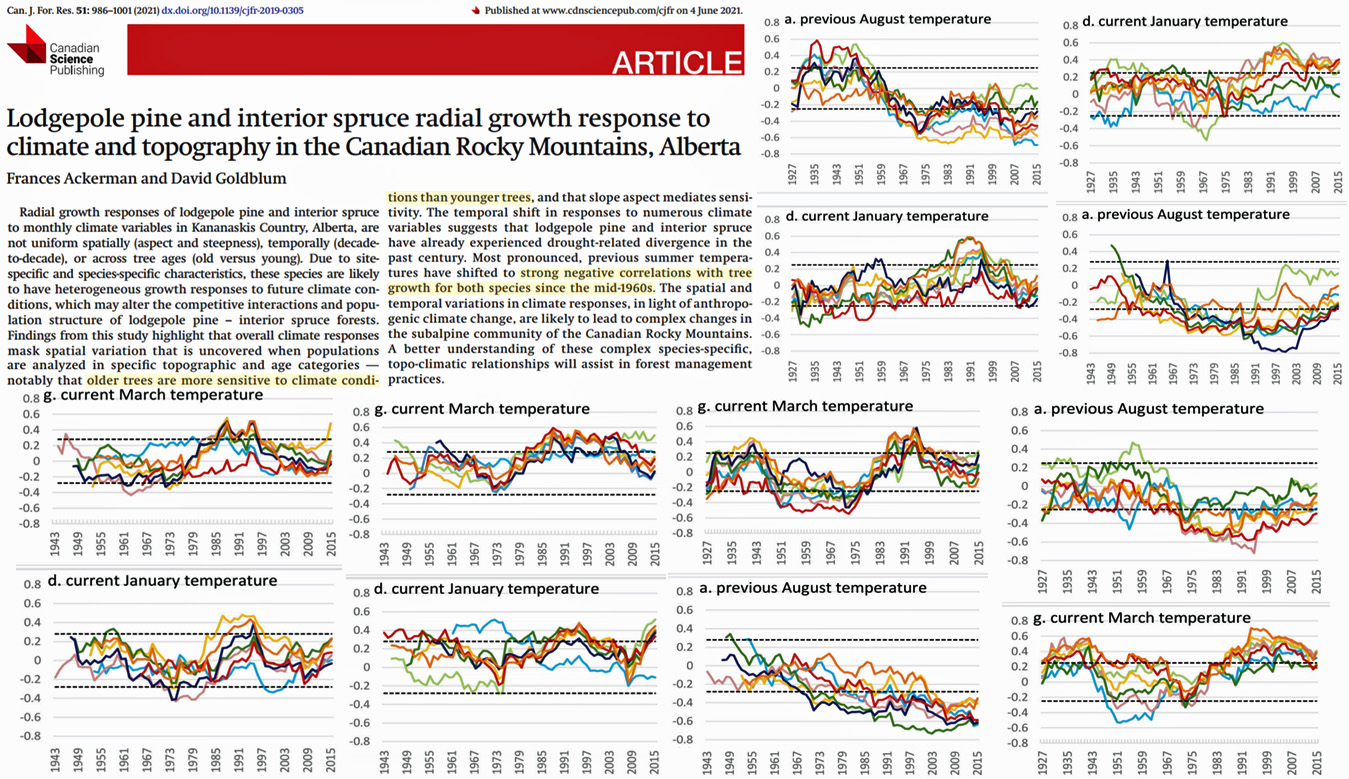
Chen et al., 2021 (Southern High Asia)
Eighteen of the 23 warmest years since 1200 A.D. occurred in the 1400s, 1600s, and 1700s.
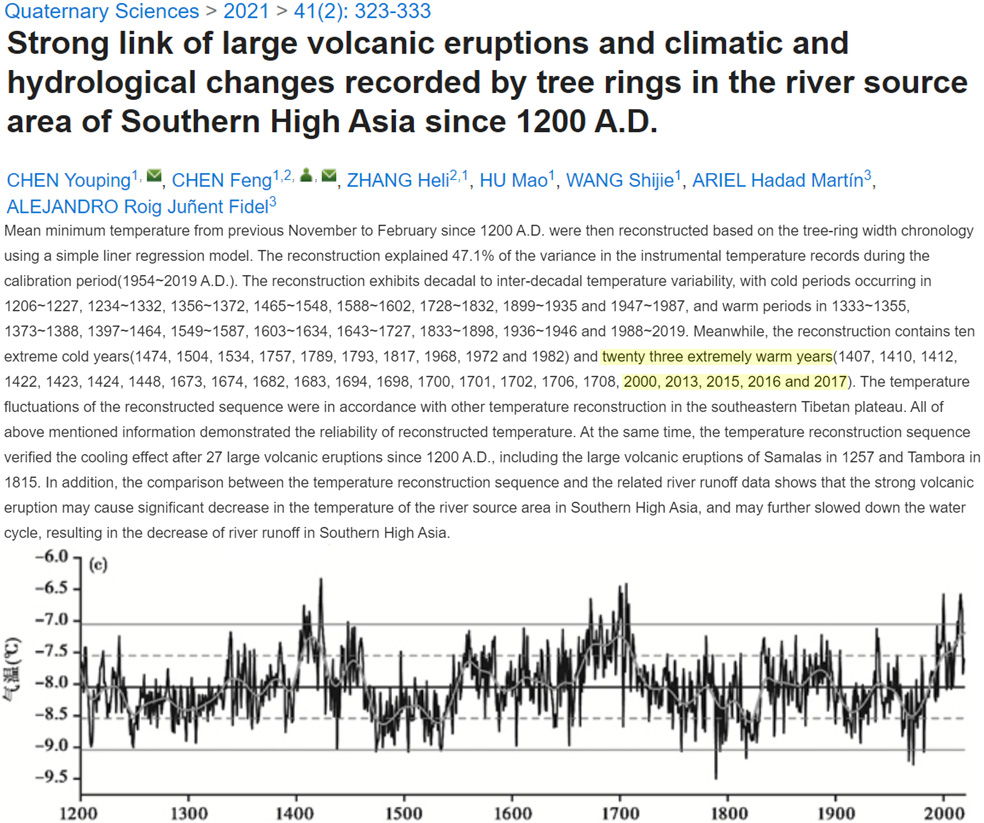
Ballinger et al., 2021 (Greenland)
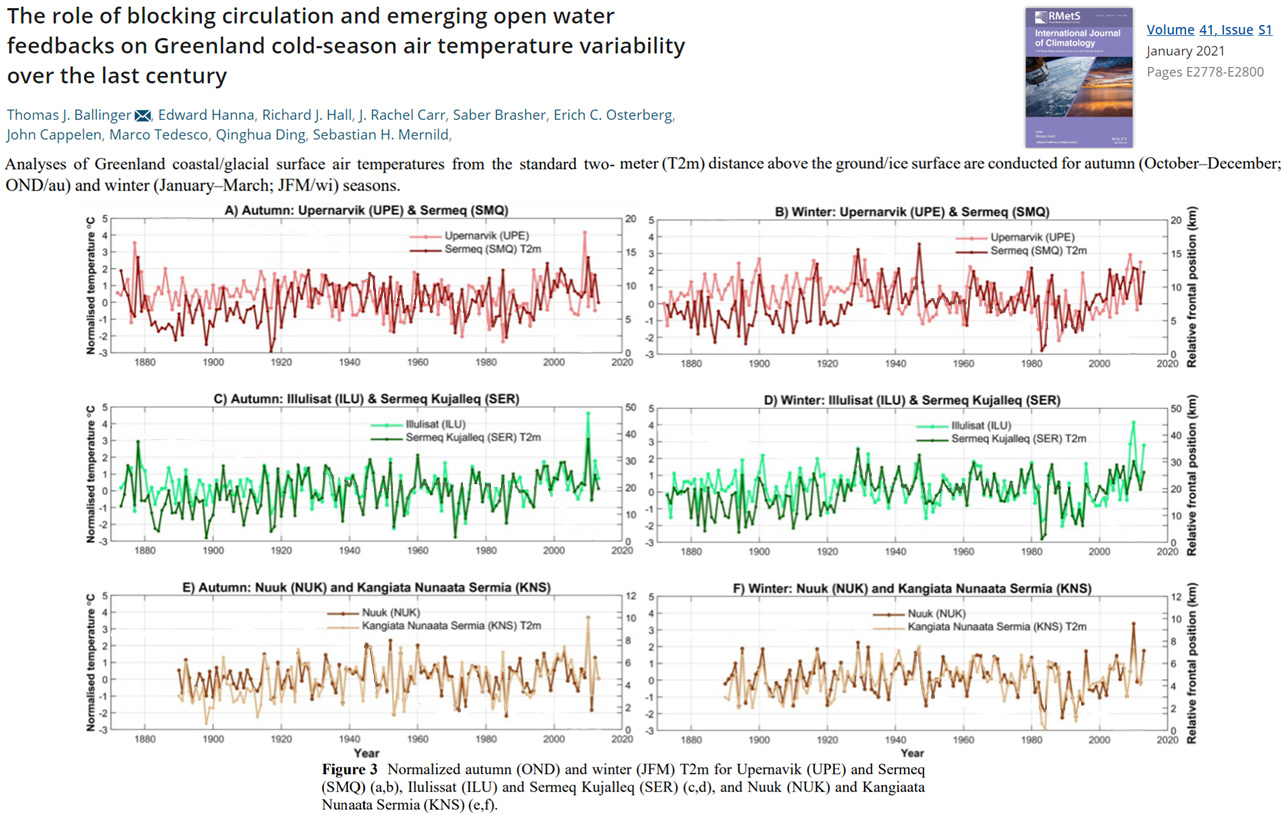
Kim et al., 2021 (Arctic Region)
“…during the Early Holocene, when the Arctic region was at least 2–3°C warmer than today.”
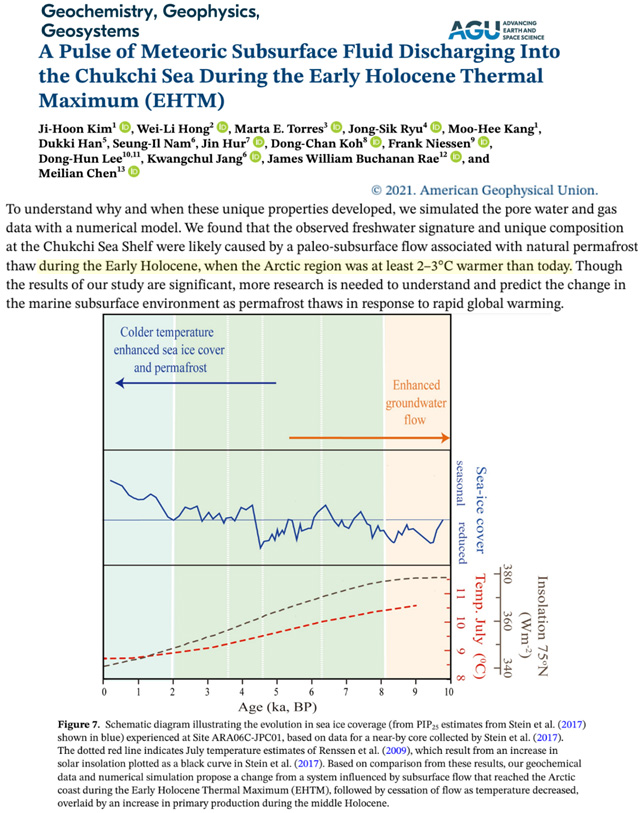
Hällberg et al., 2021 (Indonesia)
“…temperatures were as much as 3˚C warmer than today around 5 ka BP.”
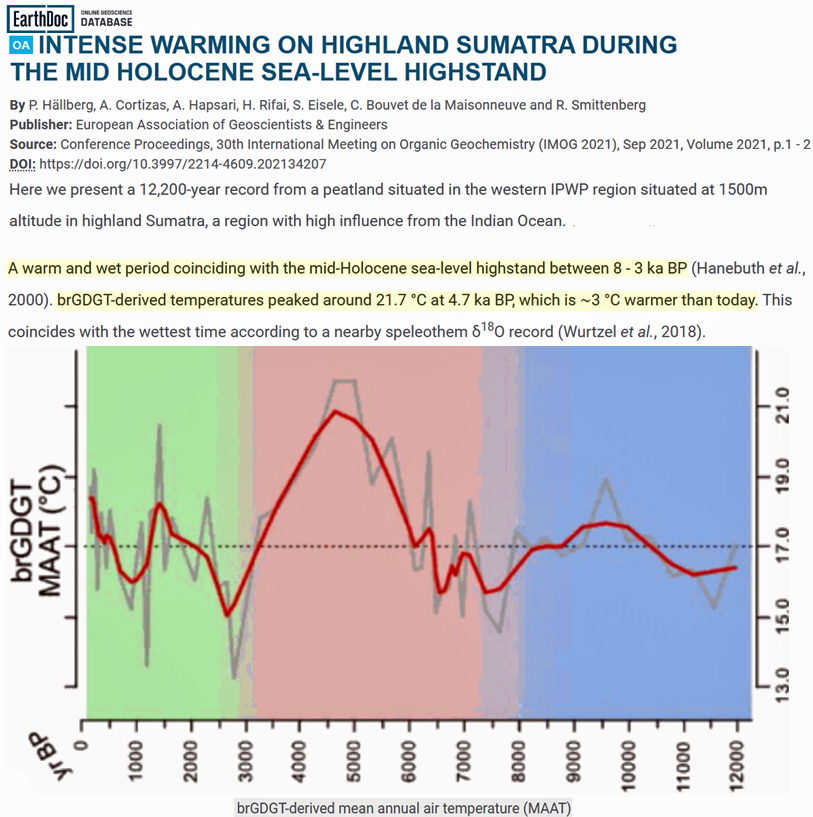
Morán et al., 2021 (Southern South America)
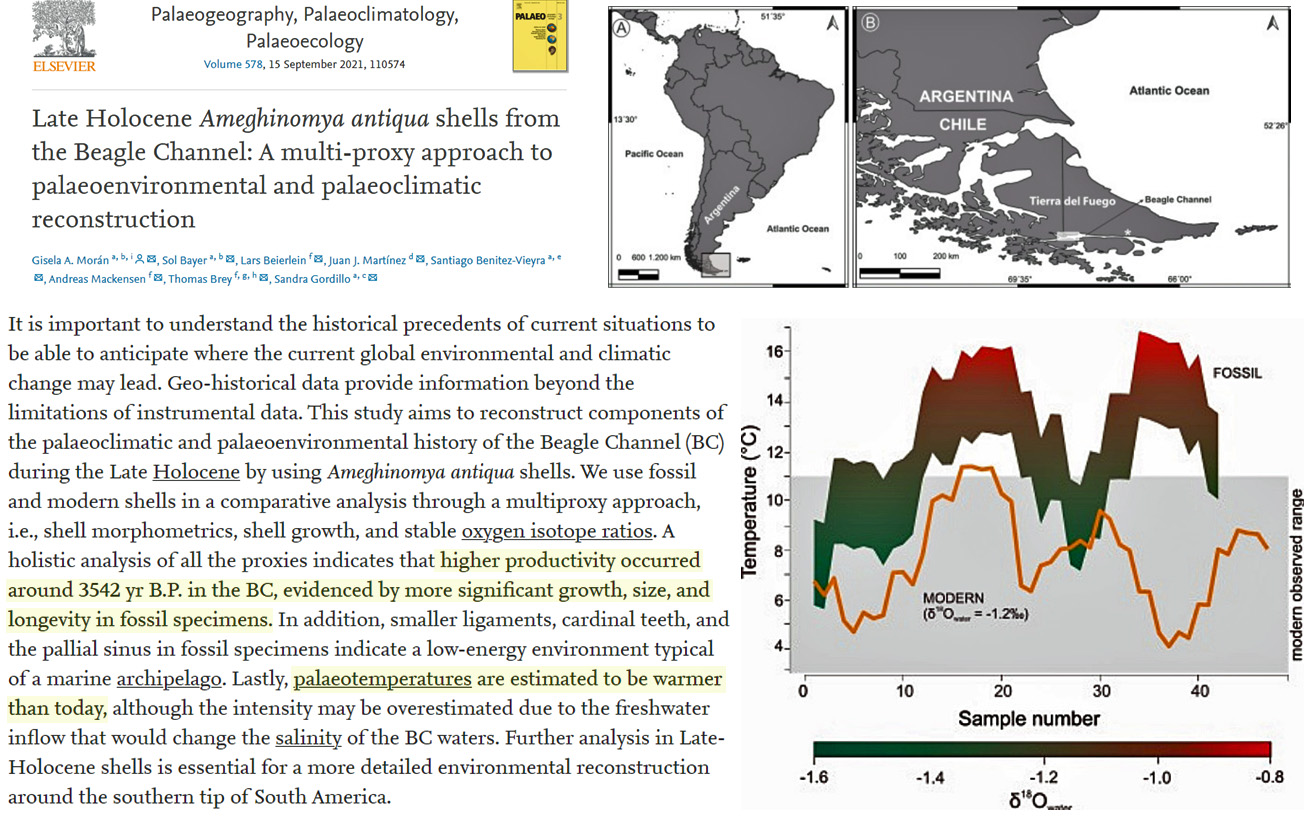
Campbell-Heaton et al., 2021 (Arctic Canada)
Assessing the ratio of winter temperature at the ground surface to that in the air (the “freezing n-factor”) suggest ground surface winter temperatures now (1981-2016) average -33°C in the Canadian Arctic’s Eureka Sound Lowlands. About 9000 to 10,000 years ago, ground surface temperatures reached -18°C at this location, which is 15°C warmer than present. Winter air temperatures, were, on average, “6-8°C warmer than today” at this time too.
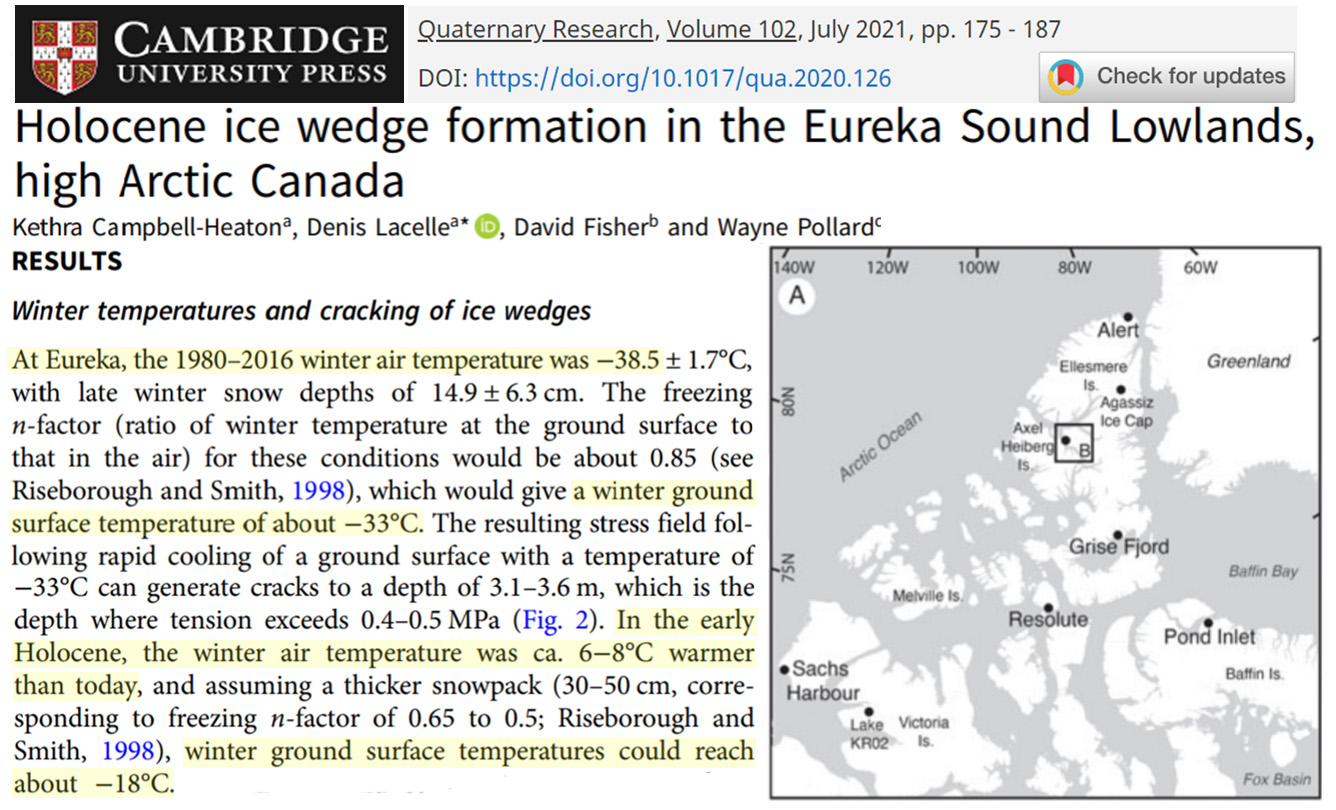
Dodson et al., 2021 (northeastern China)
“Zheng et al. (2018) measured organic compounds in peats from northeast China and estimated that temperatures were ∼5–7°C warmer than today, and that soil moisture increased from the early to late Holocene. Zhang et al. (2018) used two stalagmite records to infer that monsoon intensity was greater in the early Holocene in north China. The current mean July temperatures are about 20–21°C, however, these are estimated to be above 26°C between 8,500 and 4,200 cal yr BP.”
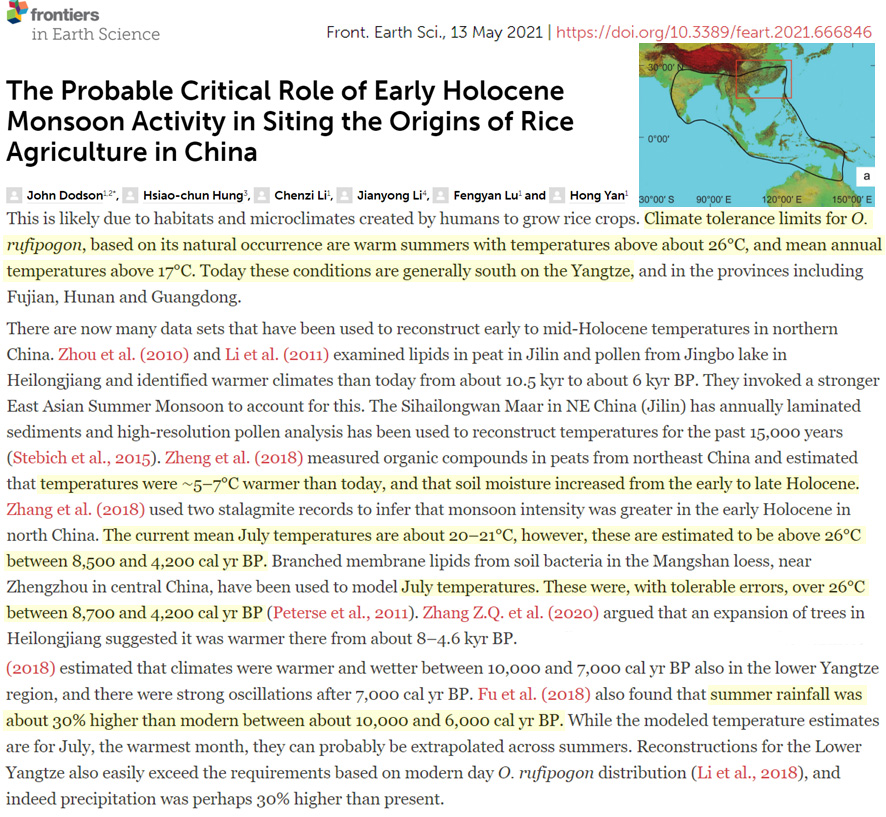
Roche, 2021 (Svalbard region)
The Svalbard-Spitsbergen region was 6-7°C warmer than today during the Early Holocene.
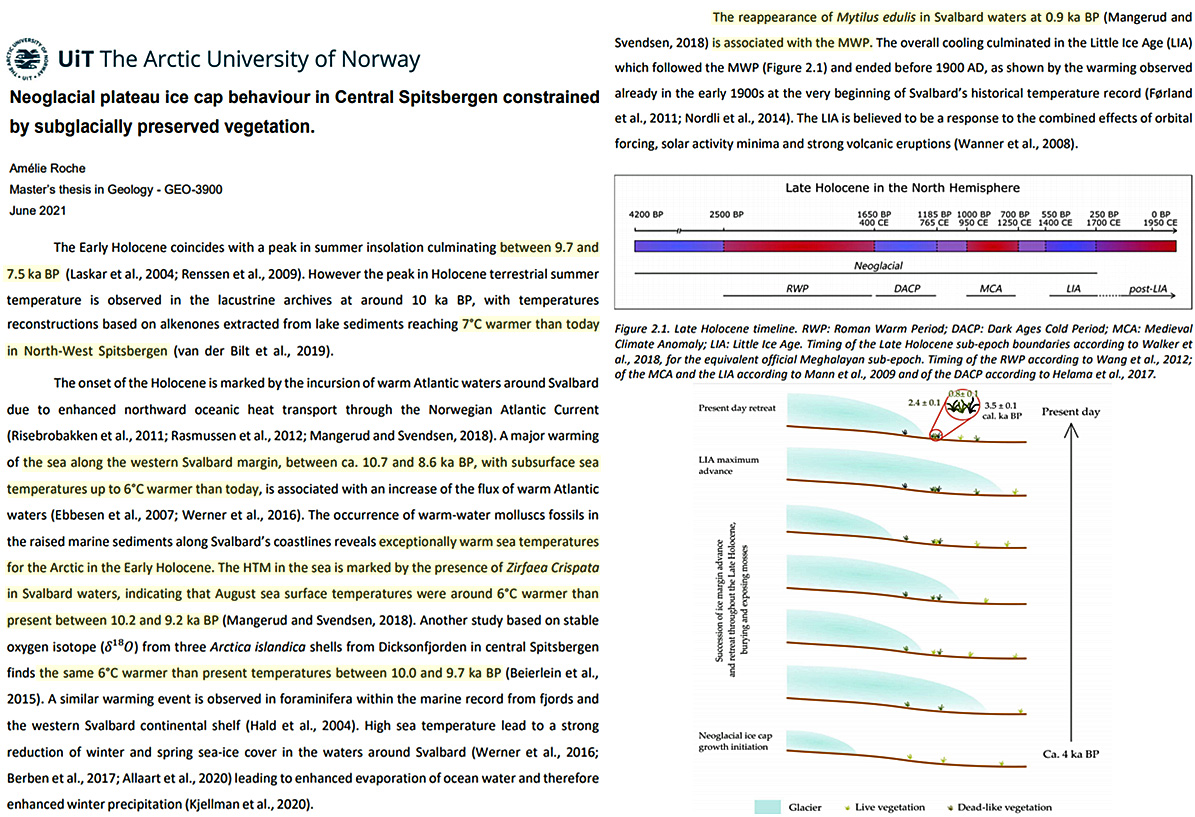
Lu et al., 2021 (northeastern China)
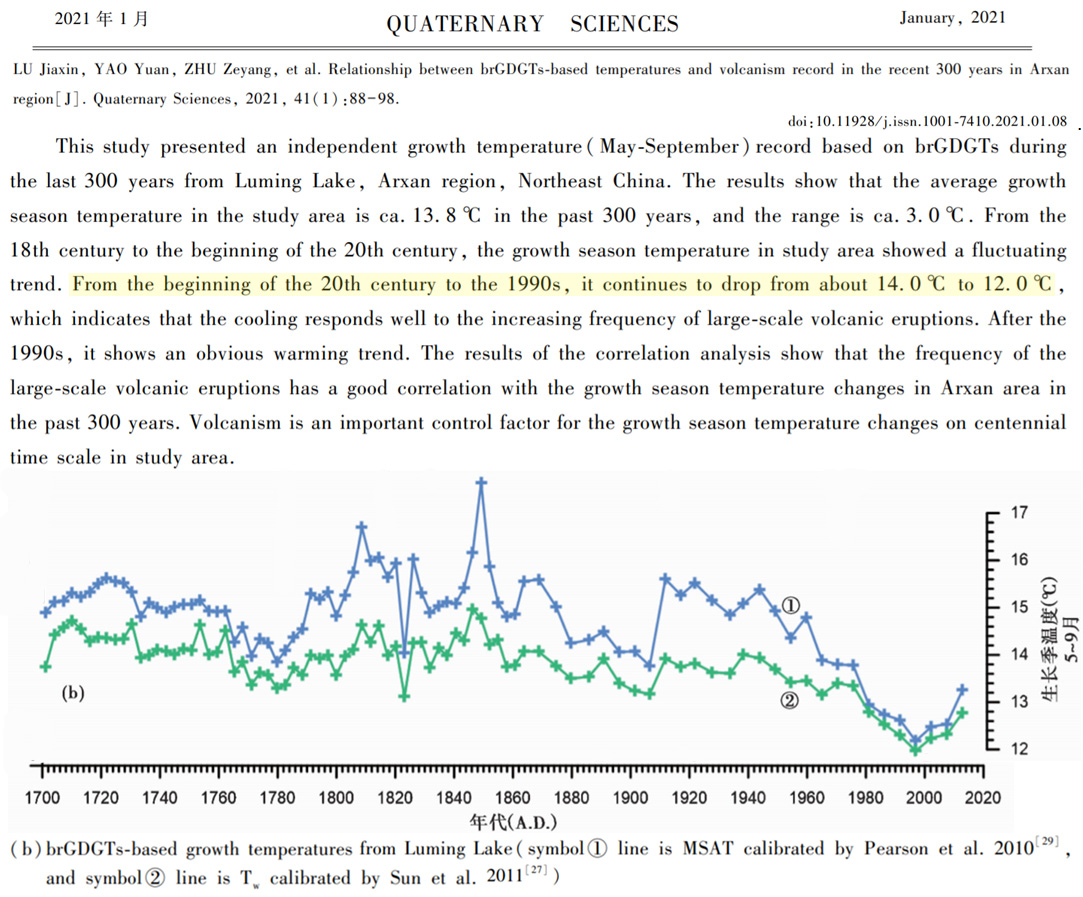





Single Mom Makes $89,844/Yr in Her Spare Time on The Computer Without Selling Anything. you can bring from $5000-$8000 of extra income every month. working at home for 4 hours a day, and earning could be even bigger. The potential with this is endless…. http://www.goldmaker1.com
Thank-you again Kenneth Richard for more observation evidence that our natural climate varies a lot over short, medium and long time periods.
Yet again we see that natural climate variation can be huge in it’s local, regional effects.
There is no global climate, there are only local/regional climates.
[…] 17 More Studies Show No Unusual Warming Trend In Recent Centuries…And A Warmer Holocene […]
Chen et al is warmer during the Sporer, late 1500’s, Maunder, Gleissberg, and current centennial solar minima.